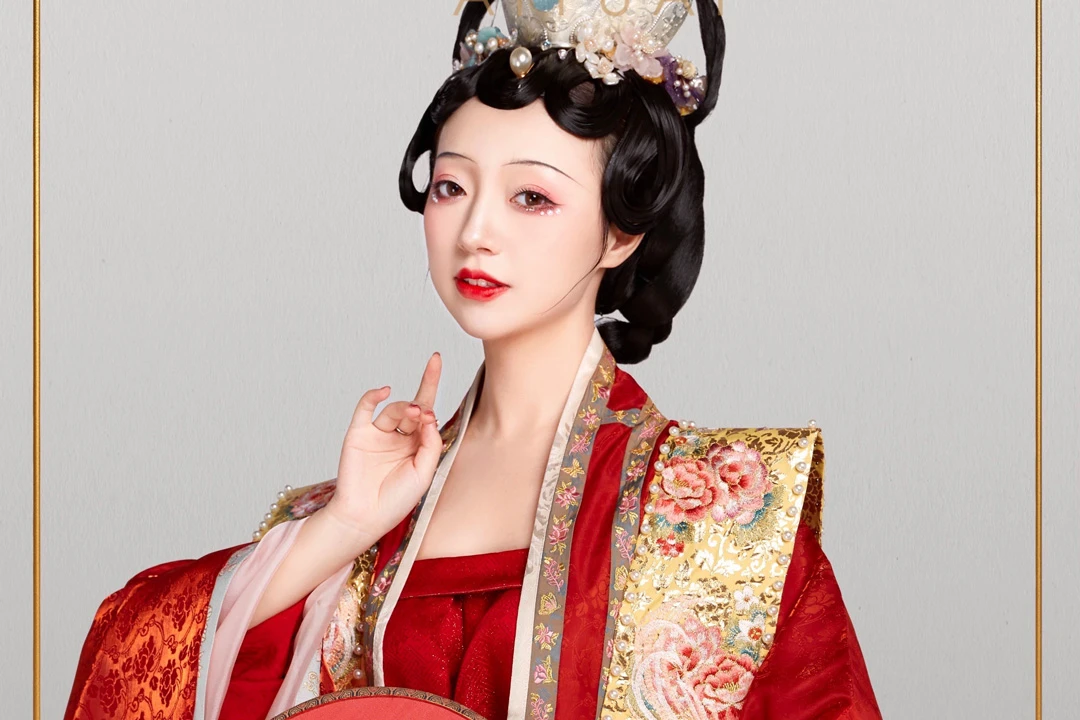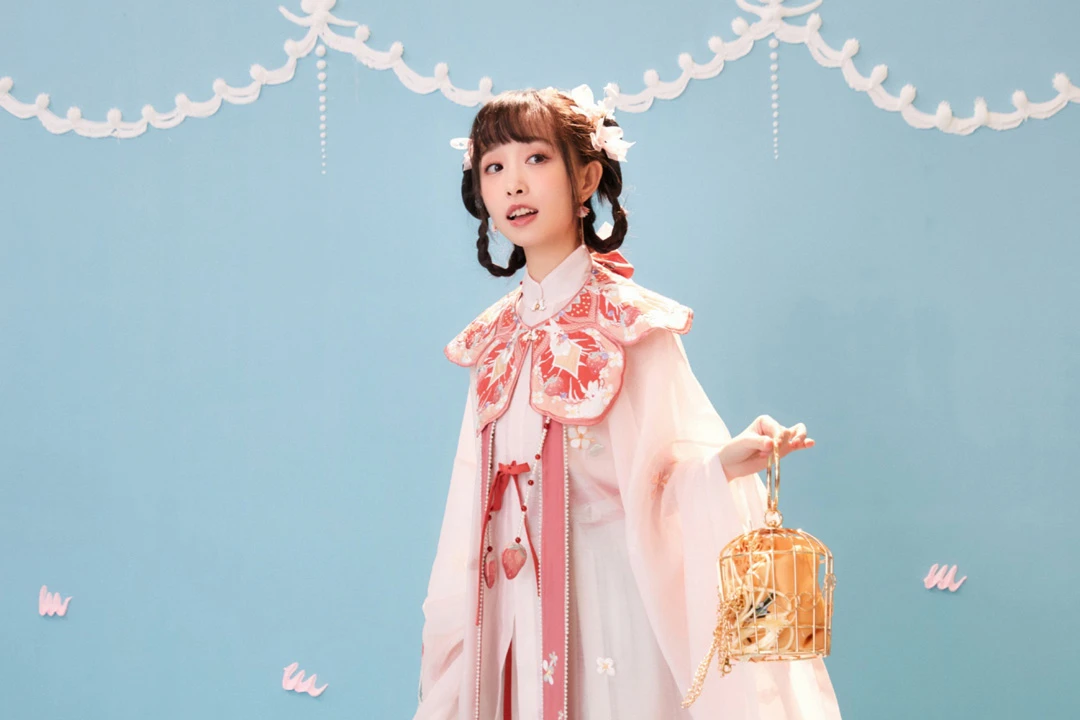As Chinese New Year approaches, many people are turning to hanfu, the traditional clothing of China’s Han ethnic majority, to celebrate the holiday in classic style. Characterized by its flowing, loose silhouettes, hanfu offers a window into ancient Chinese fashion while also being reinvented in modern ways. More and more young Chinese are donning hanfu for Lunar New Year festivities, appreciating its cultural significance and elegant aesthetics.
Hanfu’s roots stretch back thousands of years to the Warring States period, and it continued to evolve over imperial China’s dynasties. The basic elements include the yi top garment and the shang bottom skirt or pants. Common features are cross collars, loose belts, and wide sleeves that hang dramatically. Fabrics tend to be natural silk, cotton, or hemp in muted, earthy colors and minimal decoration.
While hanfu fell out of everyday use in modern life, its appearance at Chinese New Year connects wearers to centuries of tradition. Festive hanfu outfits utilize more vibrant red, gold, and pink colors and may integrate auspicious Chinese motifs. Coupled with hairpins and accessories like jade and silk flowers, the outfits create an air of sophistication perfect for New Year celebrations.
Modern designers are also putting creative spins on hanfu for the 21st century. While retaining its essential flowing form, contemporary hanfu may play with cropped lengths, fitted cuts, or even fusion styles that layer hanfu elements over Western clothes. The rise of aesthetic-focused e-commerce like China’s Taobao and influencer culture has fueled Hanfu’s resurgence among stylish Chinese youth.
Still, at its core, hanfu offers a symbolic bridge between past and present. Donning hanfu for Lunar New Year lets the Chinese connect with their heritage and signal they welcome in the spring festival respectfully and elegantly.
Key Elements for Chinese New Year Hanfu
Certain hanfu pieces and accessories are particularly well-suited for New Year celebrations:
- Changshan – The male variant of hanfu, changshan features long outer robes with side slits for ease of movement. Premium changshan are made of silk in auspicious colors like red and gold. Minimalist but refined, they allow men to channel the composed wisdom of scholars and nobles at New Year gatherings.
- Qipao – This slimmer, fitted woman’s garment evolved from hanfu into a Manchurian-inspired dress. Modern qipao creatively merge hanfu style with figure-flattering tailoring. Paired with shawls and intricate hair ornaments, qipao offer women an alluring New Year look.
- Phoenix crown – This hairpiece crafted to resemble a flying phoenix symbolizes prosperity and rebirth, appropriate sentiments for the Lunar New Year. Phoenix crowns add a final flourish when paired with formal hanfu.
- Shawl – Shawls and scarves come in airy silks patterned with traditional Chinese motifs. Not only beautiful accessories, they also keep warm against the early spring chill.
- Jewelry – Jade pendants, hairpins, and earrings complement Hanfu’s grace. Lotus flowers, peonies, and gold filigree add feminine flair.
- Embroidery – Intricate embroidery enhances hanfu robes. Common nature motifs like plum blossoms, peonies, and cranes signal renewal in spring.
- Silk fans – Fans multitask as props to elegantly cool and provide a canvas for painted landscapes when posed.
Hanfu for Family Reunions and Public Celebrations
Chinese New Year brings many opportunities to don hanfu, from intimate family gatherings to city-wide celebrations.
At home, wearing hanfu as you reunite with parents, siblings, and relatives makes the occasion special. Hanfu transforms everyday moments like eating reunion dinner or playing mahjong into time-honored rituals. Portrait photography in hanfu freezes precious memories with loved ones. Younger generations also have fun modernizing the tradition by coordinating matching hanfu outfits and poses.
In public, hanfu makes appearances at temple fairs, festivals, and parades. Cities like Beijing and Shanghai have mass gatherings where thousands gather in hanfu to experience food, music, and art honoring traditional culture. Participants feel a collective pride in their history. Meanwhile, foreigners are increasingly drawn to try hanfu at these events, captivated by its craftsmanship.
Shared Culture, Individual Expression
Ultimately, hanfu at Chinese New Year can mean different things to different wearers. For some, it honors their roots through a timeless fashion. Others treat it as cosplay or performance art. Youth incorporate hanfu into inventive street style looks. But across generations and perspectives, hanfu threads together history and hopes for the Lunar New Year. With China’s growing influence, hanfu allows people to relate to its culture on a human level.
The appeal of classic elegance mixed with modern flaire will continue attracting both Chinese and international audiences to hanfu. Through this interactive garment, the Chinese New Year spirit can spread while also inviting new traditions. Just as silk flows in hanfu sleeves, the diaspora of people who don this attire flows across borders and blends traditions in the process. Hanfu garments themselves evolve through the hands of wearers interpreting them anew. Experimenting with hanfu becomes a creative way to celebrate humanity’s diverse cultures while dreaming of renewed possibilities this coming year.
Conclusion
As the hanfu resurgence demonstrates, fashion inherently intertwines with shifting cultural sentiments. In many ways, clothing choice is performance—a chance to telegraph signals about who we are and who we aspire to be. Donning hanfu for Chinese New Year lets people embody both tradition and modernity as the occasion necessitates. The garments let wearers time travel through China’s dynasties, connect with family, and honor spring’s promise of rebirth—all while expressing individual flair.
Hanfu’s rise reflects a growing confidence in Chinese cultural exports and traditions. But it also illustrates how globalized our aesthetic tastes have become, with people of all backgrounds incorporating pieces of others’ material culture into their own. During Chinese New Year, we get to glimpse all the diversity that hanfu can represent. Though linked to the past, it is very much a living garment undergoing its own constant evolution. The tradition is being redefined not through top-down decrees but bottom-up through creative youth and international intermingling. Much like the holiday, hanfu cannot remain static; it is necessarily reinvented every year with each new wearer and occasion.
Finally, we reflected on how fashions like hanfu fluidly blend heritage and innovation as cultures evolve dynamically. Hanfu simultaneously grounds people in their roots while inspiring new creative blending. Much like Chinese New Year itself, hanfu unites past generations with future progress.


